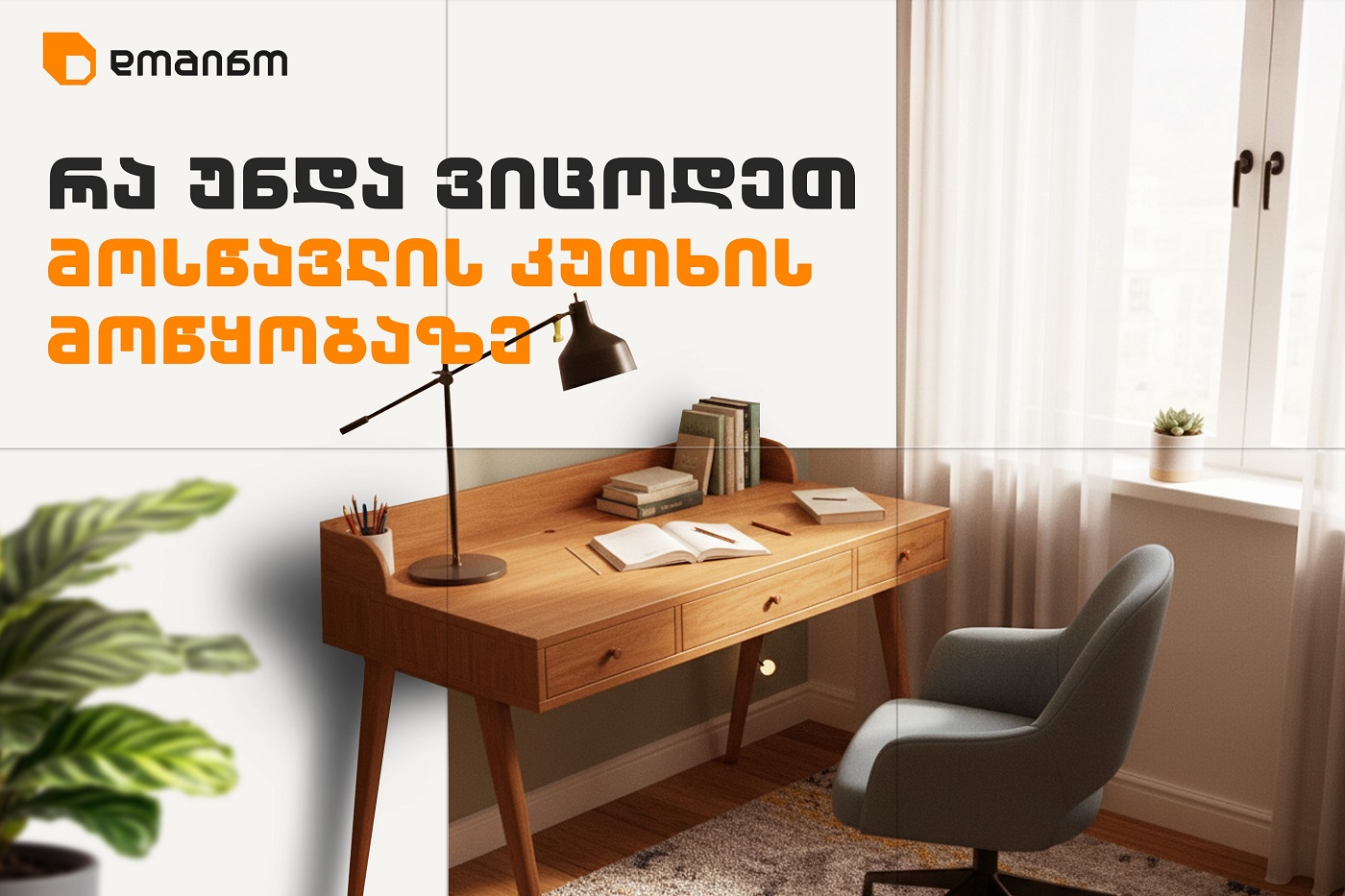
What You Need to Know About Setting Up a Student’s Study Corner
September is associated with school and the start of the academic year. At this time, parents try to create an environment for their children that makes the studying process as comfortable, motivating, and productive as possible. If you’re one of them, explore our blog: we’ve combined interesting and practical recommendations on arranging a student’s study corner. Most importantly, remember that these tips are meaningful steps toward successful learning for kids.
Designating the Study Area
In fact, arranging a study corner starts with the renovation of the children’s room and its proper functional zoning. Specialists advise planning from the outset for sleeping, study, and play areas within the child’s space.
This approach not only helps organize the room but also sets the right mood and motivation for the child. If you don’t have much space, keep in mind that you can set up a study corner in an alternative spot — for example, on a window ledge.



Choosing a Desk and Chair
Selecting the optimal desk and chair is a very important step — both must be comfortable and help the student concentrate.
Let’s start with the desk: pay special attention to its width. The child should be able to easily arrange notebooks, books, and other supplies on the surface. If the room is small, it’s better to choose a desk with drawers. It will help organize school items, save space, and present the overall design more effectively.
A comfortable chair is no less important — it promotes focus and reduces fatigue. As for specific features, specialists emphasize height and offer several tips: the distance between the chair and the desk should allow the child’s legs to be bent at a 90-degree angle, rest flat on the floor, and still move freely.
The chair’s backrest should support the lower back, and its height should be adjustable. Note that for younger students — especially active ones — buying a wheeled chair is less advisable: excessive movement will distract them and hinder concentration.



As for materials, it’s naturally best if they are as natural and eco-friendly as possible. Wood is the best choice, though items made of metal and plastic can also be purchased. Metal is more durable and has a modern design, while plastic is budget-friendly, lightweight, and easy to maintain. Don’t forget that both the desk and chair must be ergonomic so the child maintains proper posture and a healthy spine.
Lighting
Lighting is one of the key factors when arranging a study corner. Specialists recommend lighting that eliminates shadows and provides even brightness. A good solution is installing ceiling spotlights or a chandelier. Their number and size should be chosen according to the room’s area. The main thing here is to distribute the light correctly.
A desk lamp is essential. Ideally, it should have mechanisms to adjust brightness and direction. The lamp should be 30–40 cm above the desk surface, and the light should fall at a 30–45 degree angle. Remember: if the child is left-handed, place the lamp on the right side. Reading or working at a computer will be much more comfortable that way.



Clean the light fixtures regularly, because dust reduces light intensity and quality and, accordingly, the child’s productivity. Avoid very warm yellow or, conversely, cold bluish light. Yellow creates a cozy, non-work atmosphere, while blue strains the eyes. The best choice is neutral white (4000–5000 Kelvin). If you place shelves or a bookcase near the desk, you can accent them with warm strip lighting, or mount additional wall sconces to add a distinctive touch to the design and create creative or relaxing moods alongside studying.
Storage for School Supplies
Properly organized storage helps a student quickly find essentials and keep things tidy.
The best solution is to use shelving units and wall shelves, though you can also add small cabinets and boxes. Be sure to buy organizers for pencils, pens, paper, and other small items, and size them to the desk surface so they don’t take up too much space. Keep in mind that the child should be able to reach the organizers easily.
By the way, you can use creative, colorful, and uniquely shaped storage pieces that also serve as décor.



If there’s enough space in the study corner, you can divide it into additional zones. For example, place a small armchair or sofa for reading or relaxing, and create extra coziness with a floor lamp. It’s also a good idea to create a mini children’s library and place favorite books on wall shelves.
Kids love boards that can be used not only for studying but also for planning, important dates, and notes. Creative children will benefit from a small additional table for drawing and sculpting. For especially sporty kids, consider a pull-up bar, Swedish wall, or basketball hoop. Short physical activity between study sessions will only help.
And finally: be sure to consider the child’s preferences. Many want the space decorated with a favorite theme — football, space, or a style inspired by a favorite character — so ask them as well.
A comfortable and functional study corner will definitely boost a student’s motivation, so visit Domino branches. With us, you’ll find many interesting items to create the perfect learning space.
